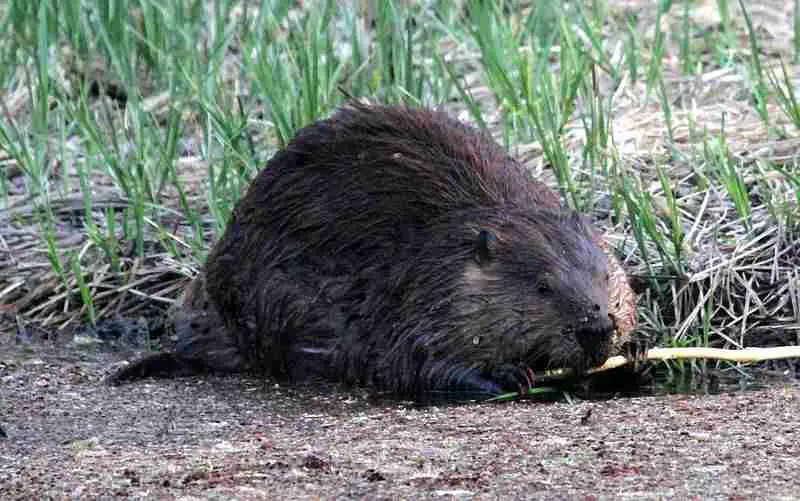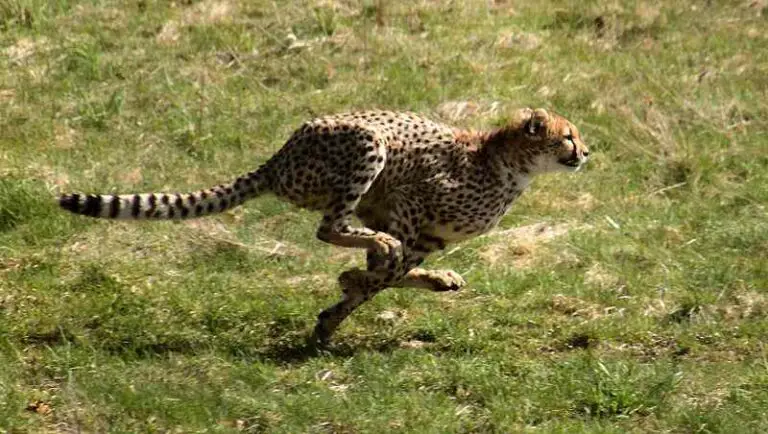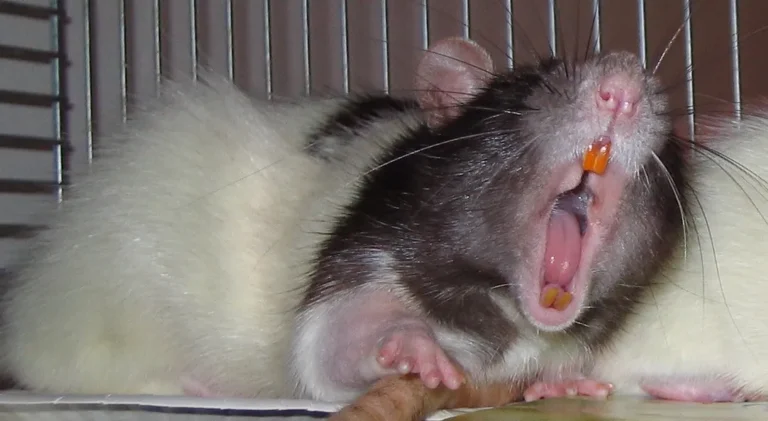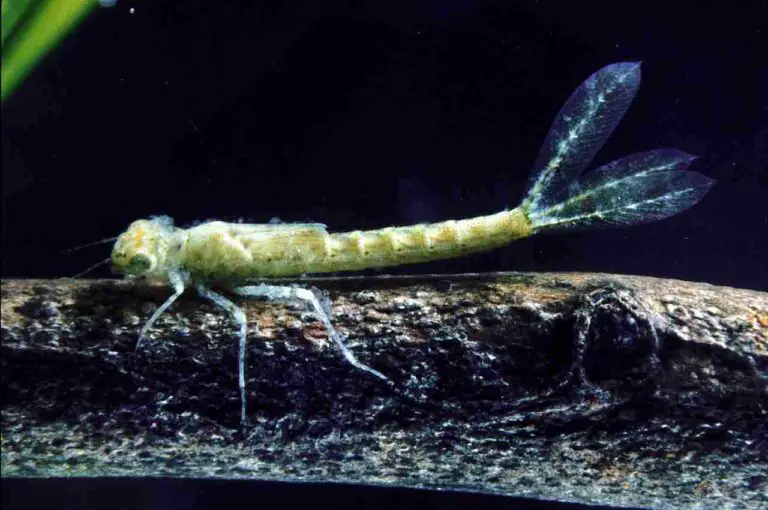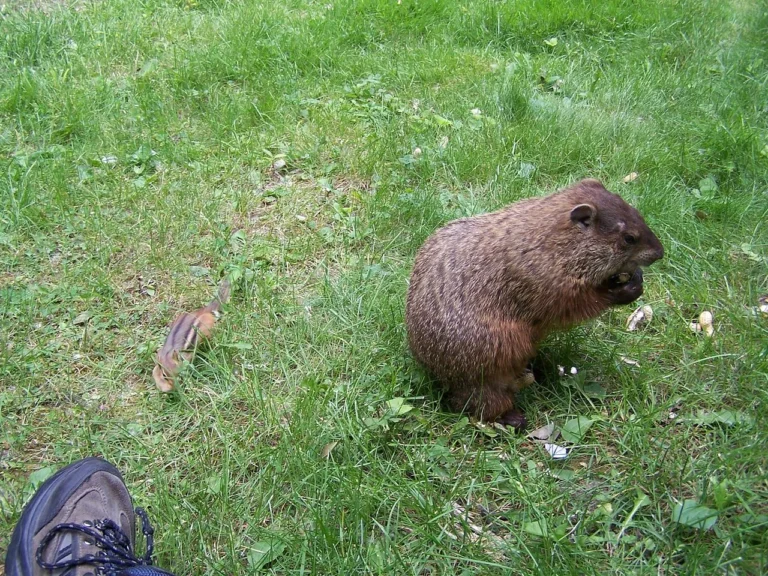5+ Biotic Factors in a Wetland Ecosystem and Their Characteristics Discussed
Biotic factors in a wetland ecosystem are; autotrophs (plants, algae, cyanobacteria), herbivores, carnivores, omnivores, decomposers, and wetland-trophic relations.
This article discusses the biotic factors in a wetland ecosystem, and their characteristics, as follows;
1). Wetland Autotrophs (as one of the Biotic Factors in a Wetland Ecosystem)
Autotrophs have a vital role to play in wetland ecosystems.
Below are some key concepts related to autotrophs in wetlands.
Autotrophs as Primary Producers in Wetlands
Autotrophs, like algae and vascular plants, are primary producers in wetland ecosystems [6].
They are generally capable of synthesizing their own food using solar energy, through the process of photosynthesis.
Wetlands are inhabited by a diverse range of plant species, which have evolved and adapted to the distinctive edaphic and hydrological conditions of these environments.
Examples of plants found in wetland areas are; reeds, water lilies, cattails, and mangroves [8].
These plants are vital to overall ecology in the wetland biome, through their various functions that include soil stabilization (erosion-mitigation), habitat provision and control of hydrodynamic conditions.

Autotrophs and Nutrient Cycling in Wetland Zones
Autotrophs in the wetland biome, contribute to nutrient cycling within their habitat.
They take up and assimilate nutrients from the sediments and water, so that these nutrients are incorporated into their tissues.
When these autotrophs shed leaves or die, the accumulated nutrients are released back into the ecosystem through biodegradation [7], so that essential resources remain available for other aquatic organisms.
Carbon Sequestration by Wetland Autotrophs
Wetland autotrophs like marsh plants, are heavily involved in carbon sequestration [2].
They function as effective carbon sinks that absorb atmospheric carbon dioxide (CO2) during photosynthesis, storing it as organic carbon in their biomass, as well as in wetland soils.
This dynamic plays a role in regional mitigation of climate change, by helping reduce the atmospheric concentration of greenhouse gases.
*Food and Habitat Provision, Ecosystem Services by Autotrophs in Wetlands
Autotrophs in wetlands provide both food and shelter/habitat for several organisms, including some birds, mammals, amphibians, fish, and insects.
They are also instrumental toward water purification, because they filter-out pollutants and absorb excess nutrients to improve water quality.
*Autotrophs in Formation and Stability of Wetlands
The presence of autotrophs like vascular plants, is essential for thee formation and stability of wetlands.
Roots of these plants help to bind sedimentary materials like soil particles, so that the structure of the wetland habitat is maintained, and erosion is mitigated [5].
2). Wetland Herbivores
Herbivores constitute one of the important biotic factors in a wetland ecosystem, due to their immense contribution to the organic dynamics of this biome.
Examples of Herbivorous Animals/Organisms in Wetland Ecosystems
Various herbivorous animals inhabit wetland regions, and rely on plant material as a major food source.
Examples of wetland herbivores are;
1. Herbivorous fish like tilapia [4] and carp
2. Muskrat
3. Turtle
4. Waterfowl (like ducks)
5. Aquatic insects
6. Beavers
7. Moose

Plant Consumption by Herbivores in Wetlands
Herbivores in wetlands feed on various parts of plant, including roots, stems and leaves.
These animals graze on both emergent and submerged plants, macrophytes and algae. Their activities help regulate autotroph growth, and maintain the structure of vegetation in wetland habitats.
Nutrient Cycling and Wetland Herbivores
Herbivores contribute to nutrient cycling in wetland ecosystems.
Their feeding activities lead to the breakdown of plant material, and the release of nutrients back into the environment.
Such released nutrients are thereby made available for uptake by plants and other wetland organisms, so that the overall nutrient dynamics of the wetland is maintained.
Role of Wetland Herbivores in Regional Trophic Interactions
Herbivores in wetlands serve as a link between primary producers (autotrophs) and heterotrophic consumers in higher trophic levels.
They consume vegetation, and in turn serve as a source of food for predators like reptiles, carnivorous mammals, birds and fish, thereby supporting energy transfer and nutrient-cycling, across the hierarchy of the food chain.
Wetland Herbivores and Ecosystem Functioning
Grazing activities of herbivores can influence the functioning of wetland ecosystems, by altering (or regulating) the composition and structure of vegetation.
These activities reduce overgrowth and excessive competition among wetland plants, and create gaps for speciation and increased diversity/species richness.
Selective feeding by many of these herbivores can also influence the dynamics of plant communities, and facilitate the process of biological succession in wetland ecosystems.
Herbivores in Freshwater Wetlands
The type and geographic region of a wetland determines the herbivores that can be found.
Herbivores found in freshwater wetlands include;
1. Geese
2. Ducks
3. Carp
4. Turtles
5. Beavers
6. Snails
7. Muskrats
3). Wetland Carnivores (as one of the Biotic Factors in a Wetland Ecosystem)
Carnivores also occur in wetland ecosystems, where they play a vital role as core biotic components.
Examples of Carnivores in Wetlands
A diverse array of carnivorous animals thrive in wetlands by feeding on other animals for their own nutrients and energy.
Examples of carnivorous animals in wetland ecosystems are;
1. Raptors like hawks, owl, eagles
2. Reptiles like alligators, bullfrogs and snakes
3. Mammals like minks and otters [9]
4. Fish like pike and bass

Predatory Behavior Among Wetland Carnivores
Carnivores in the wetland ecosystem, have evolved to adopt various predatory behaviors which they exhibit.
They hunt and capture their prey by means of various strategies such as stalking, pursuit, and ambush; and may also employ scavenging as a means of survival
The diet of wetland carnivores may comprise of; amphibians, crustaceans, small fish, small mammals, birds, and insects.
Trophic Interactions Involving Carnivores in the Wetland Ecosystem
Carnivores generally occupy the higher trophic levels of the wetland food chain/web/energy pyramid, and may function as apex predators.
They are responsible for regulating the populations of prey species, thereby maintaining biodiversity and ecological balance within the wetland ecosystem.
The feeding behavior of wetland carnivores influences the abundance, distribution and structure of organic communities in lower trophic levels.
Role of Wetland Carnivores in Nutrient-Cycling and Energy Flow
Carnivores are involved in the transfer of nutrients and energy within wetland habitats.
They play their role in the recycling dynamic by consuming lower organisms, as well as scavenging on carrion.
These activities convert biomass of prey into chemical energy that is assimilated by the carnivore, and subsequently made available to other organisms through decomposition or predation.
Carnivores as Indicators of Wetland Ecosystem Health
Carnivores can be used as indicators of the integrity and health of wetland ecosystems.
The presence, abundance and distribution of these organisms are reflective of the availability of prey and other essential resources, as well as the overall ecological wellbeing of their habitat habitat.
This implies that changes in the population dynamics of carnivore species can provide information on temporal changes and environmental impacts (positive, negative) of natural and anthropogenic factors in the wetland.
Overview of Examples and Influencing Factors, of Wetland Carnivores
The specific carnivorous organisms present in any given wetland may vary with availability of prey, type and geographic location of the wetland.
Examples of carnivores in wetland ecosystems are; ospreys, alligators, bald eagles, minks, river otters, predatory fish like northern pike, largemouth bass, herons, and water snakes.
Factors that influence carnivores in a wetland include;
1. Prey availability
2. Micro-habitat availability
3. Nature of trophic interactions
4. Competition
4). Wetland Omnivores
Omnivores are among the biotic factors in a wetland ecosystem, and contribute to ecological functioning and sustainability.
Dietary Adaptations of Wetland Omnivores
Omnivores are organisms with flexible dietary habits, that can consume both plant and animal matter [1].
In the wetland biome, omnivores are versatile and highly-adaptive with regards to their feeding, so that they are able to derive nutrients and energy from diverse food sources.
Their diet comprises of plant materials like seeds, aquatic foliage and algae; as well as animal matter like small fish, carrion, amphibians and wetland invertebrates.
Trophic Interactions Involving Omnivores in Wetlands
Omnivores usually occupy an intermediate trophic level in the wetland food chain.
They are able to consume both producers (plants, algae) and consumers (wetland animals), and are instrumental as a trophic link between these two main organic groups.
They also facilitate the transfer of essential resources within the ecosystem, by their activities.
Ecological Resilience and Flexibility of Omnivores in Wetlands
Omnivores in the wetland ecosystem are often characterized by physiological and behavioral adaptations/traits that enable them survive under diverse conditions by them exploiting a broad range of food resources.
They may possess foraging habits or/and specialized digestive systems which help in the extraction of nutrients from their diverse diet.
This ecological resilience and flexibility are behind their tendency to adapt rather rapidly to changing conditions in their environment, and fluctuations in the availability of food.
Nutrient Cycling by Omnivores, as Biotic Factors in a Wetland Ecosystem
Omnivores, like other biotic factors in a wetland ecosystem, are vital to the process of nutrient cycling in their habitat.
Through their dietary habits, these animals contribute to organic decomposition, and recycling of nutrients back into the ecosystem.
The feeding behavior of wetland omnivores, influences availability of nutrients for both plants and other consumers, and promotes overall productivity of the ecosystem.
Omnivores as Indicators of Wetland Ecosystem Health
The presence, behavior and activities of omnivores can provide valuable insight into the wellbeing and ecological integrity of wetlands.
Omnivore population dynamics, and foraging trends, are reflective of changes in habitat characteristics, environmental quality, food availability, and overall health of the wetland.
These factors can be evaluated by monitoring omnivores in the wetland (which reveals the impact of environmental changes and regional human activities).
Examples of Omnivores in the Wetland Ecosystem
Examples of omnivores in wetland ecosystems are;
1. Kōura (crayfish; is also sometimes categorized as a scavenger and detritivorous decomposer)
2. Red fox
3. Striped skunk
4. Racoon
5. Some turtle species (like the painted turtle)

The species of omnivores present in any given wetland depend on specific geographic and ecologic conditions.
5). Wetland Decomposers (as one of the Biotic Factors in a Wetland Ecosystem)
Decomposers are also represented in wetland ecosystems, where they play an important role in nutrient-cycling.
Decomposers, and the Decomposition Process in Wetlands
Decomposers are a group of organisms whose activities lead to the breakdown of organic materials, such as the remains, and waste, of plants and animals.
These materials are converted into simpler compounds that can be re-assimilated and reused by the environment.
Examples of wetland decomposers are; fungi, bacteria, and detritivorous invertebrates like arthropods and worms.
In wetland habitats, decomposers have a vital role to play in the recycling of essential resources, and their subsequent release back into the ecosystem for organic reuse.
Nutrient Cycling by Decomposers in Wetlands
Decomposers facilitate the biodegradation of complex organic compounds like lignin and cellulose, to form simpler products.
Through this process, decomposers help release essential nutrients, like carbon, phosphorus and nitrogen, back into water and soil. As a result, the nutrients then become available for plant uptake, and a cycle of continuous nutrient recycling is established in the wetland ecosystem.
Decomposers, Detritus-based Recycling, and the Wetland Food Web
Detritus is an important resource in the food web of wetland ecosystems.
This is due to the presence of decomposers and detritivorous scavengers which operate in all trophic levels (although some studies place them at the base of the food chain).
Decomposers feed on organic matter, and break it down into smaller particles, facilitating its transformation into reusable organic compounds that can be assimilated by other organisms.
Detrital organic matter supports various organisms, including detrivorous invertebrates, microorganisms, and some amphibians as well as fish that directly or indirectly benefit from its nutrient/energy content.

Habitat Modification by Decomposers in Wetlands
Decomposers contribute to the composition and physical structure of the wetland ecosystem.
These organisms help with soil conservation, through organic matter-management, aeration, and structural maintenance.
Wetland decomposers replenish organic matter in soils to improve fertility and retain essential nutrients.
They also enhance water filtration and carbon sequestration.
Lastly, their activities help maintain productivity and overall health of the wetland by facilitating decomposition of animal remains and plant litter.
Decomposers as Indicators of Wetland Ecosystem Health
Like other biotic factors in a wetland ecosystem, the activities, presence and trends of decomposer-populations, can all serve as indicators of ecosystem health.
This means that temporal changes in any of the measurable characteristics of decomposer communities, are reflective of ecosystem conditions.
Studying and monitoring decomposer populations can give information the availability and quality of essential resources, and may warn about impending (or already occurring) ecological/environmental issues like degradation and diversity-loss.
Specific resources and conditions determine the species of decomposers in any wetland. Some common examples of these wetland decomposers are; fungi like Penicillium and Aspergillus, bacteria like Pseudomonas, Escherichia coli and Bacillus [3]; as well as some beetle species, snails, slugs and earthworms.
*Trophic Relations in the Wetland Ecosystem
Trophic relations are interactions that occur between various organisms in a food chain, food web, energy pyramid, or biomass pyramid; as a result of which essential resources like bioenergy and nutrients are transferred and conserved.
As this implies, trophic relations are essential for energy conservation in any ecosystem. These relations bind and unify the various biotic factors in a wetland ecosystem, ensuring that they remain sustainable and functional.
Trophic relationships can be classified into trophic levels that include; producers (plants, cyanobacteria, algae), primary consumers (herbivores), secondary and tertiary consumers (carnivores, omnivores).
1. Wetland Producers
Wetlands are rich with various species and groups of producers, including algae, vascular and non-vascular aquatic plants, photosynthetic microbes.
These organisms capture sunlight, with which they synthesize biomass and chemical energy using carbon dioxide, water, and nutrients; through the process of photosynthesis.
Producers constitute the foundation of the trophic hierarchy in wetlands, by capturing energy from the sun and using the same to provide food for non-autotrophic organisms.
2. Wetland Primary Consumers
Wetland ecosystems also play host to a group of primary consumers, which are mostly herbivorous organisms like some insects, small mammals and waterfowl.
These organisms feed directly on algae and plant matter, and obtain both nutrients and energy from producers.
3. Wetland Secondary Consumers
In wetland biomes, secondary consumers are usually carnivorous organisms, which feed on (mostly) herbivores.
Examples of wetland secondary consumers are; reptiles, carnivorous fish, birds, and some predatory insects (or their larvae).
By preying on primary consumers, secondary consumers obtain nutrients and energy, which they subsequently transfer to higher trophic levels.
4. Wetland Tertiary Consumers
A group of higher predatory organisms classified as tertiary consumers, are present in some wetland ecosystems.
The word 'some' above is used to indicate that species richness, abundance and diversity in the wetland biome are not as high as some terrestrial ecozones such as tropical rainforests, which are typically very rich in organic resources, and have food chains that easily feature up to five trophic levels (that is; including tertiary and quaternary consumers).
In wetlands, tertiary consumers may include relatively-large predatory fish, raptors like eagles, and some mammals.
Tertiary consumers (when present) usually function as apex predators that occupy the highest trophic level in the wetland food chain, and regulate the populations of lower trophic levels.
5. Decomposers
Decomposers, like fungi and bacteria, are an essential part of trophic relations, and biotic factors in a wetland ecosystem.
They break down organic matter, from plants and animals, thereby achieving waste management and returning used nutrients back into the ecosystem for reuse.
Decomposers complete the wetland ecologic cycle by transforming complex organic compounds into simpler products that can utilized by producers to supply food to consumers.
Conclusion
Biotic factors in a wetland ecosystem are;
1. Wetland Autotrophs
2. Wetland Herbivores
3. Wetland Carnivores
4. Wetland Omnivores
5. Wetland Decomposers
... as well as Trophic Relations in the Wetland Habitat
References
1). Agrawal, A..A.; Klein, C. N. (2000). "What Omnivores Eat: Direct Effects of Induced Plant Resistance on Herbivores and Indirect Consequences for Diet Selection By Omnivores." Journal of Animal Ecology 69(3). Available at: https://doi.org/10.1046/j.1365-2656.2000.00416.x. (Accessed 16 July 2023).
2). Barea, L. C.; Verdaguer, D.; Gispert, M.; Font, J.; Compte, J.; Llorens, L. (2023). "Carbon Stocks in Vegetation and Soil and Their Relationship with Plant Community Traits in a Mediterranean Non-tidal Salt Marsh." Estuaries and Coasts 46(2). Available at: https://doi.org/10.1007/s12237-022-01155-w. (Accessed 16 July 2023).
3). Franco, A. M. V.; Benegas, G. R.S.; Correa-Pérez, C. C.; Imas, L., Netto, F.; Lombardo, L.; Bamberg-Ames, J.; Alonso-Ortoz, E.; Mereles-Aranda, E. (2023). "Indicator bacteria in subtropical natural wetlands waters." Available at: https://doi.org/10.21203/rs.3.rs-2631770/v1. (Accessed 16 July 2023).
4). Getachew, T. (1987). "A study on an herbivorous fish, Oreochromis niloticus L., diet and its quality in two Ethiopian Rift Valley lakes, Awasa and Zwai". Journal of Fish Biology, Volume 30, Issue 4 p. 439-449. Available at: https://doi.org/10.1111/j.1095-8649.1987.tb05767.x. (Accessed 16 July 2023).
5). Gyssels, G.; Poesen, J.; Leuven, K. U.; Bochet, E.; Li, Y. (2005). "Impact of plant roots on the resistance of soils to erosion by water: A review." Progress in Physical Geography 29(2):189-217. Available at: https://doi.org/10.1191/0309133305pp443ra. (Accessed 16 July 2023).
6). Molinari, B.; Stewart-Koster, B.; Adame, F.; Campbell, M.; McGregor, G. B.; Schulz, C.; Malthus, T.; Bunn, S. E. (2021). "Relationships between algal primary productivity and environmental variables in tropical floodplain wetlands." Inland Waters 11(4):1-11. Available at: https://doi.org/10.1080/20442041.2020.1843932. (Accessed 16 July 2023).
7). Serna, A.; Richards, J. H.; Scinto, L. J. (2013). "Plant Decomposition in Wetlands: Effects of Hydrologic Variation in a Re-Created Everglades." Journal of Environmental Quality 42(2):562-572. Available at: https://doi.org/10.2134/jeq2012.0201. (Accessed 16 July 2023).
8). Uchendu, E. (2019). "COMMON WETLANDS IN NIGERIA." Available at: https://www.academia.edu/40008816/COMMON_WETLANDS_IN_NIGERIA. (Accessed 16 July 2023).
9). Valenzuela, A. E. J.; Rey, A. N. R.; Fasola, L.; Schiavini, A. (2013). "Understanding the inter-specific dynamics of two co-existing predators in the Tierra del Fuego Archipelago: The native southern river otter and the exotic American mink." Biological Invasions 15(3):645-656. Available at: https://doi.org/10.1007/s10530-012-0315-9. (Accessed 16 July 2023).
